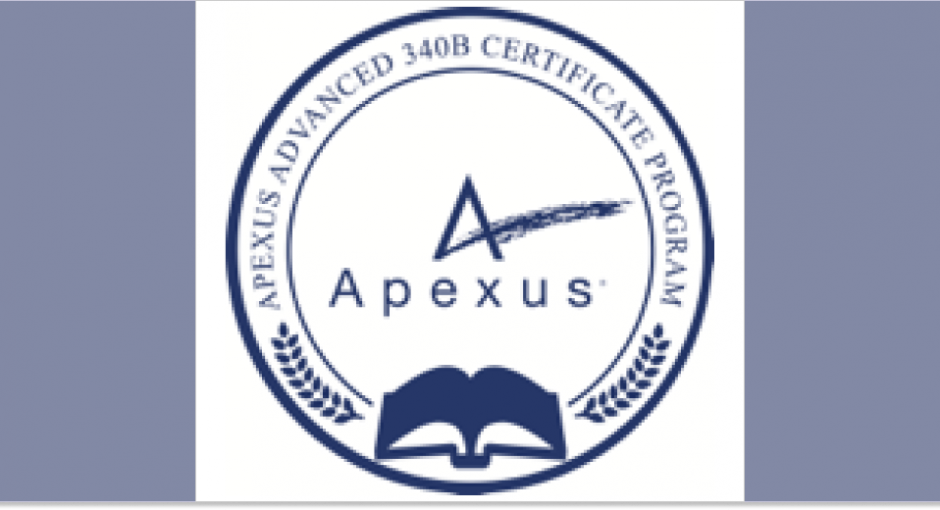SPONSORED CONTENT
Resolving 340B noncompliance can be a time-consuming task for 340B participants — and one of the greatest challenges in managing a 340B program. This guide outlines the five steps to successfully navigate resolving compliance issues requiring repayment to manufacturers, from discovery to resolution, and includes a solution to help streamline the refund process.
Step #1: Discovering 340B Program Noncompliance
Program noncompliance can be detected in four ways: self-audit, HRSA audit, manufacturer good faith inquiries or audits, and through normal day-to-day operations. Compliance issues are most commonly identified through self-audits conducted either by an internal audit department, pharmacy department, or an outside contractor hired by a covered entity.
“A compliance issue such as incorrect 340B accumulation quantities may be caused by systemic failures such as a data feed transmission error. In my experience as a 340B team member, we had analysts dedicated to reviewing specific program areas to monitor our program for noncompliance on an ongoing basis to identify issues like these early,” says Shamroz Sultan, 340B ACE, Apexus 340B Education Program Manager.
340B program managers may identify errors by monitoring the following areas:
- Split-billing software settings
- Electronic health record charge capturing
- Accumulations and purchase history ratio, or
- Purchasing patterns for certain sites or pharmacies
Irregular activity in these areas would warrant further evaluation and a search for a root cause to identify the full scope of a potential compliance issue.
The newest 340B Trends and Hot Topics learning module developed by the Apexus Advanced 340B Operations Certificate Program identifies current 340B Program audit trends and reviews best practice for self-audits and examples of early indicators of noncompliance. The new module will be available in Spring 2023.
Step #2: Self-Disclosing a Compliance Issue to HRSA
When an instance of noncompliance is discovered, the extent of the compliance issue should be evaluated to determine if self-disclosure to HRSA is warranted. Covered entities should determine if the issue meets the covered entity’s material breach threshold as outlined in their policies and procedures.
Below are some examples of how covered entities may define their material breach threshold.
- X% of total 340B purchases or impact to any one manufacturer
- X$ (fixed amount), based on total outpatient or 340B spend, or impact to any one manufacturer
- X% of total 340B inventory (units)
- X% of audit sample
- X% of prescription volume/prescription sample
For more information on how to determine if a compliance issue should be self-disclosed to HRSA, review the Establishing Material Breach Threshold 340B compliance tool provided by the 340B Prime Vendor Program, managed by Apexus.
If the impact of a compliance issue has met or exceeded the covered entity’s material breach threshold, the covered entity should self-disclose the compliance issue to HRSA and develop an action plan to resolve the issue.
The covered entity’s self-disclosure letter should include the following information, at a minimum:
- Covered entity’s 340B ID
- Description of the noncompliance that occurred
- Scope of the issue (as outlined in the list above)
- Corrective action plan (CAP) to fix the issue and prevent recurrence
- Strategy to inform affected parties, including manufacturers, if applicable
- Plan for financial remedy if repayments are owed
Covered entities may use the 340B Prime Vendor Program’s Self-Disclosure to HRSA and Manufacturers template to report an instance of noncompliance to HRSA.
If a compliance issue does not meet the material breach threshold, a covered entity should still work with impacted manufacturers to remedy the error in good faith through repayment if applicable and report the issue to their 340B leadership/oversight committee. Because recurring compliance issues due to inappropriately controlled processes may lead to possible material breach later on, covered entities should develop a method to monitor for a reoccurrence of the problem.
Step #3: Developing a Corrective Action Plan (CAP)
A corrective action plan (CAP) is necessary for an issue identified in a HRSA audit as well as noncompliance self-disclosed to HRSA. Key internal stakeholders representing a covered entity should work together to create a corrective action plan in response to a compliance issue. A CAP should include two major items:
- Actions planned or taken to address findings
- Actions planned or taken prevent noncompliance in the future
Completing a CAP can be challenging. Whether a covered entity is creating a CAP in response to a HRSA audit finding or a self-disclosure, the entire 340B compliance team should be involved, comprising representatives from legal, finance (including the CFO, revenue cycle, billing, and reimbursement), corporate compliance, materials management, internal audit, and pharmacy leadership and operations.
Step #4: Working with manufacturers to resolve noncompliance
Repayment to Manufacturer
Covered entities should reach out to manufacturers in good faith to disclose a compliance issue and offer repayment:
- Manufacturer information can be found on 340B OPAIS—manufacturer search: https://340bopais.hrsa.gov/manufacturersearch
- Covered entities should confer with manufacturers to calculate the repayment amount owed
Rather than preemptively repaying manufacturers a calculated amount, covered entities should consult with manufacturers to calculate the repayment amount owed. This is typically done by:
- Providing a concise description of instance and scope of noncompliance
- Disclosing all NDCs and quantities impacted for defined timeframe
- Developing an agreed-upon corrective action plan (CAP), including the method for repayment to the manufacturer.
Credit/Rebill Through a Wholesaler
There may be situations where noncompliance is identified shortly after purchase and a process may be used on a past invoice to “credit/rebill” to a correct price point or account, according to transparent and agreed upon terms between the manufacturer and wholesaler. In this remedy, the wholesaler may submit a credit to a covered entity account and rebill a separate account to reclassify the purchase (i.e., from a 340B account to non-340B account). This process may be used as a solution to a variety of compliance issues including:
- 340B over-purchasing in a virtual replenishment model
- GPO prohibition violations
- Duplicate discounts
Considerations associated with this remedy include:
- Time restrictions
- Credit/rebills are generally only possible within a specific time frame based on policies of manufacturers and/or wholesalers
- Transparency with manufacturers may require communication from the covered entity.
Step #5: Successful Closure of a Compliance Issue
HRSA expects CAPs, including repayment to manufacturers, to be completed within six months of the covered entity’s self-disclosure. This includes periodic progress reports and a final report indicating how the issue was resolved and how it will be monitored moving forward. Because of this resolution timeline, resolving compliance issues with manufacturers may require significant effort.
Completing a manufacturer repayment accurately and efficiently can be challenging for the following reasons:
- Historical drug pricing information is difficult for covered entities to access.
- Manufacturer contacts for refunds are often not publicly available.
- No statutorily defined process governs refunds of ineligible 340B discounts.
- No industry standard exists for 340B refunds.
- Covered entities may have limited personnel resources dedicated to 340B program management.
Streamline the Refund Process: A Solution from Apexus
The Apexus Covered Entity Refund Service (CRS) helps covered entities resolve noncompliance issues through standardized best practices that:
- streamline the process
- ensure accuracy
- draw on a team of experts in 340B
- save time
- increase efficiency
Apexus CRS streamlines the return of ineligible 340B discounts to individual manufacturers through a standardized process that reduces the time and effort spent resolving errors. The solution draws on the expertise of Apexus in 340B compliance, transaction analysis, project management, and reporting to provide refund calculation, documentation, and closure.
Partner with Apexus CRS to benefit from:
- A database of manufacturer contacts that eliminates time spent finding the correct contacts for refunds
- A comprehensive list of current and historical WAC prices for 340B NDC codes to ensure accurate refund calculations
- Communication templates, project documentation, and calculation methodology to standardize the refund offer and approval process (developed in collaboration with manufacturers)
For more information, visit Apexus.com/CRS, contact CoveredEntityRefunds@Apexus.com, or call 888.340.2787.




